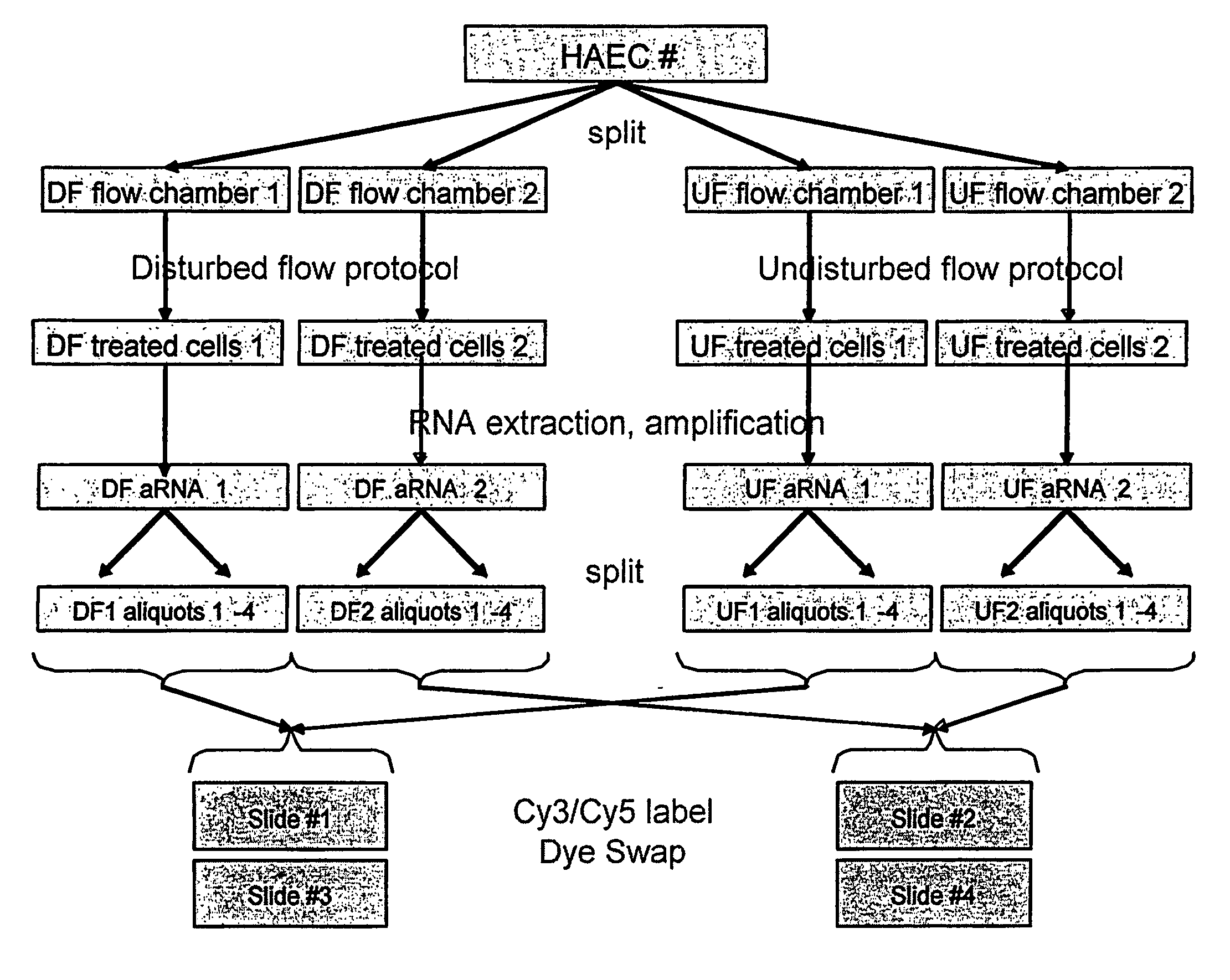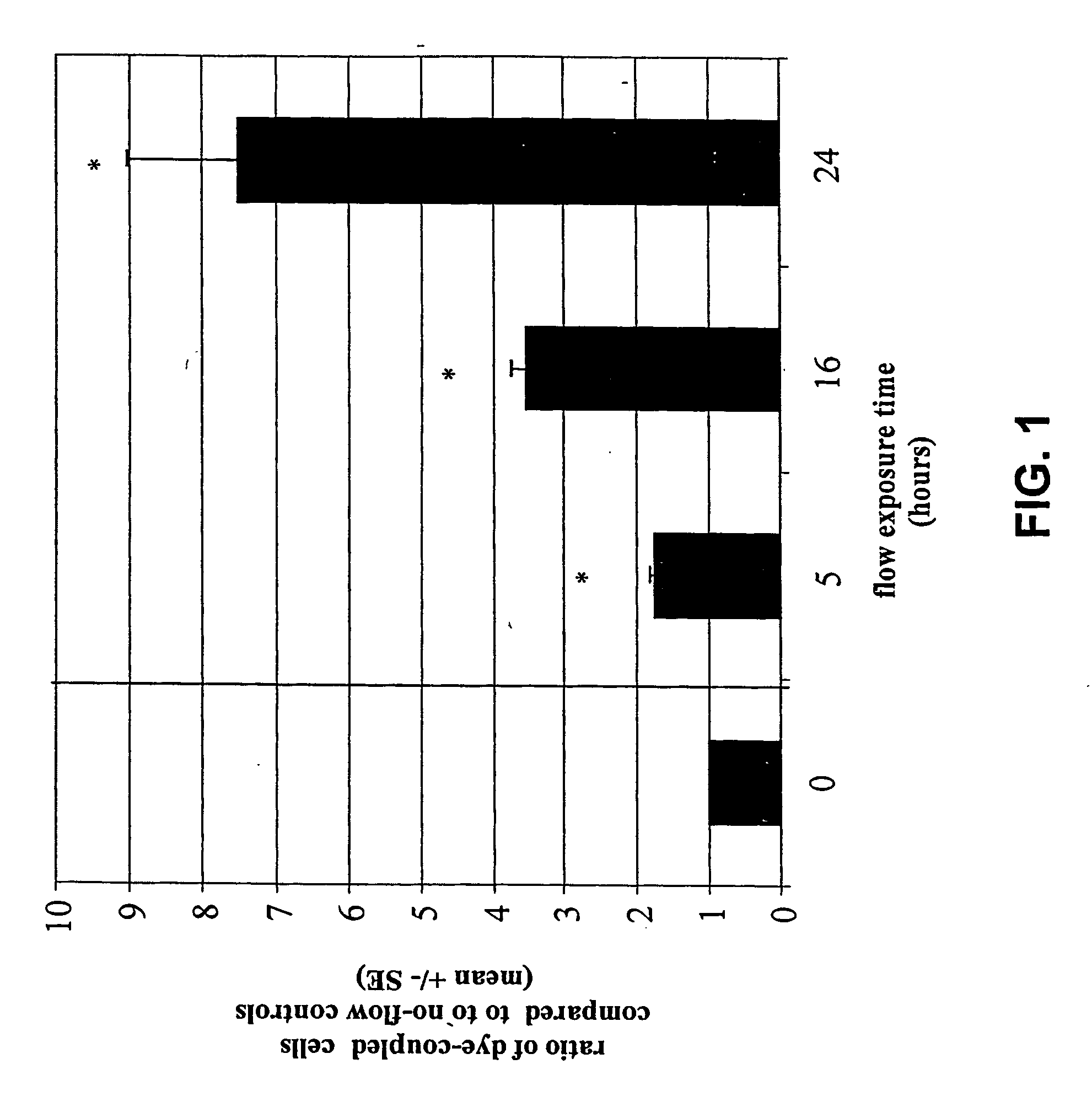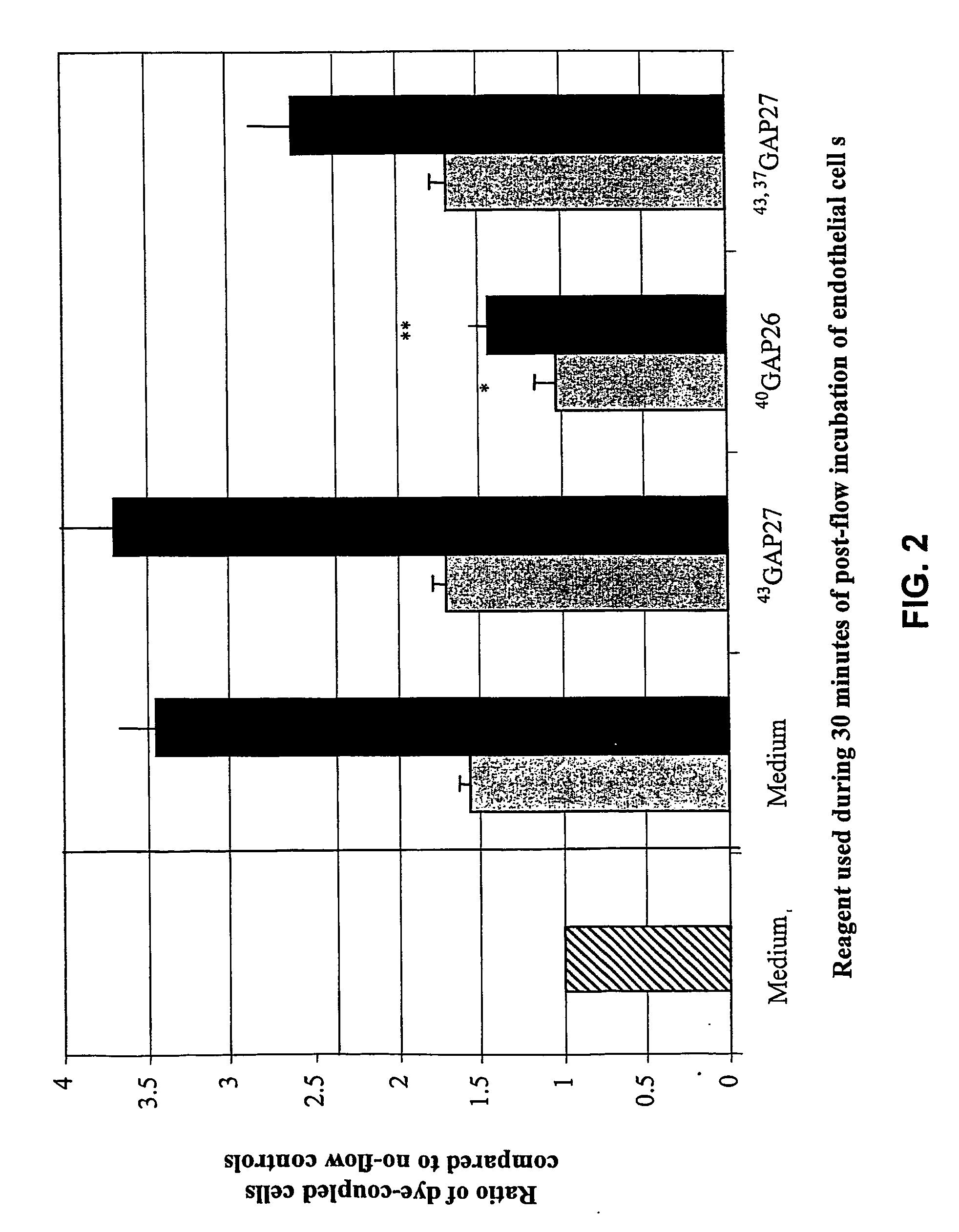Methods of Establishing Intercellular Communication in an Endothelial Cell Layer and Uses Thereof
a technology of intercellular communication and endothelial cells, which is applied in the direction of prosthesis, blood vessels, biocide, etc., can solve the problems of vascular gap junction protein expression regulation by hemodynamics in human cells, seeded cells are lost from the surface of the graft, and the success of this approach is modes
- Summary
- Abstract
- Description
- Claims
- Application Information
AI Technical Summary
Problems solved by technology
Method used
Image
Examples
example 1
Flow Apparatus
[0051] A parallel plate chamber was connected to a recirculating flow circuit composed of a variable-speed peristaltic pump, a fluid capacitor that damped pulsation, and a reservoir with culture medium. The flow chamber consisted of a Teflon upper plate and a stainless-steel bottom plate held together by eight screws. A medical-grade silicon gasket was used to seal the chamber and avoid fluid leakage. A precisely machined recess (1×30×120 mm) on the top plate defined the flow path in the chamber. The top plate also housed inlet and outlet ports and a quartz window for light transmission and sample visualization. The bottom plate was machined flat and polished to a mirror finish with an opening 62 mm from the flow entrance for sample placement. Uniform laminar, disturbed, and pulsatile flows can be created with the flow apparatus. Pulsatile flows are generated by superimposing a pulse to the main flow using a programmable syringe pump. Local disturbed flows, that simul...
example 2
Determination of Flow Characteristics
[0052] Because the channel height in the flow chamber was much less than its width, the flow was considered two-dimensional. The fully developed channel flow, away from the step disturbance, had a uniform wall shear stress given by t=6 μU / H, where U is the mean velocity of the flow through the channel, H is the channel height, and μ is the dynamic viscosity of the fluid. In the disturbed flow region, the wall shear stress was nonuniform. The spatial variation in shear stress in regions of flow separation and recirculation was obtained from the numerical solution of the flow equations by using finite-element models. The computational domain was a two-dimensional straight channel with a rectangular step on one of the walls. The aspect ratio of the step (height / width) was 0.4, and the ratio of the channel gap to the step height (H / h) was 2.5. The two-dimensional steady Navier-Stokes equations were solved by using the computational program NEKTON (M...
example 3
Cells
[0053] Two well characterized strains of bovine aortic endothelial cells (BAEC; passages 6-8), initially isolated from yearling calf thoracic aortas, were cultured on glass coverslips that contained a fine photoetched grid (Bellco Glass), using standard techniques (Gimbrone, M. A., Jr. Spaet, T. H., ed. (1976) in Progress in Hemostasis and Thrombosis (Grune and Stratton, New York). Coverslips were coated with 0.1% gelatin, or, for in situ hybridization experiments, a gelatin / CrK(SO4)2 (0.5:0.05%) subbing solution was used. Monolayers were grown under static conditions in standard culture medium and transferred to the flow apparatus when confluent.
PUM
| Property | Measurement | Unit |
|---|---|---|
| shear stress | aaaaa | aaaaa |
| aspect ratio | aaaaa | aaaaa |
| viscosity | aaaaa | aaaaa |
Abstract
Description
Claims
Application Information
 Login to view more
Login to view more - R&D Engineer
- R&D Manager
- IP Professional
- Industry Leading Data Capabilities
- Powerful AI technology
- Patent DNA Extraction
Browse by: Latest US Patents, China's latest patents, Technical Efficacy Thesaurus, Application Domain, Technology Topic.
© 2024 PatSnap. All rights reserved.Legal|Privacy policy|Modern Slavery Act Transparency Statement|Sitemap



